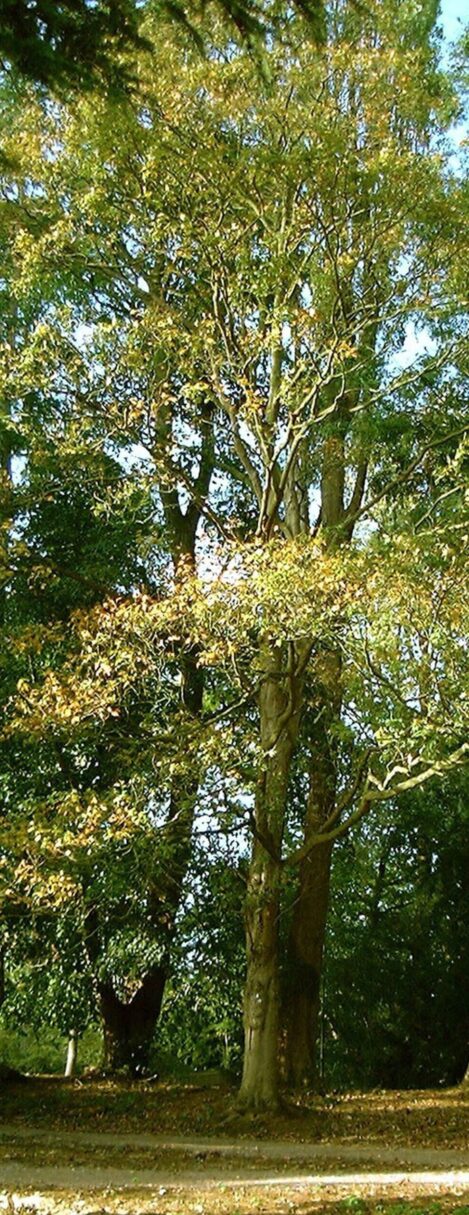#44 SUGAR MAPLE
Acer saccharum

County Champion
Planted: 1916
Champion tree
This tree is on the north side of the Park Drive Path.
| Distribution: | Central and north- eastern America |
| Planting Date: | March 1916 from J Cheal and Sons, Lowfield Nurseries, Crawley. |
| Growth Habit: | Ultimately large, (25 m), ornamental tree resembling Norway Maple. |
| Bark: | Dark grey with broad fissures, becoming shaggy and gnarled. |
| Leaf: | To 10 cm long, and nearly the same across, with three or five toothed lobes. Fine red and gold colouring in Autumn after the first frost. |
| Flowers: | Small and red, or yellow, hang in clusters on very fine stalks in early Spring. |
| Fruit: | A pair of connected winged seeds, dependent on wind for dispersal. |
| Tree size in April 2023: | Height 18.5 m and girth 174 cm (at 1.5 m) |
| Uses: | Trees tapped in Spring, when the sap starts to rise. 150 litres of sap are needed to make 4 litres of Maple Syrup. |
| Plant Hunter: | In mid 16th century Jacques Cartier and fellow explorers, in Quebec, became the first Europeans to experience the sweet sap. By mistake, when they cut down what they believed to be a walnut tree. The sweet sap flowed freely. Evaporation through simmering was found to intensify the flavour and was compared to ‘good wine’. |
| Introduction Date: | Known in Europe since 1735 via the French colonists in Quebec. |
| Anecdotes and Comments: | In the 17th century the Huron Indians were known to consume the pure sap, and in times of famine, to chew on the tree bark for energy. Rated County Champion by height and girth in April 2023 by The Tree Register. |